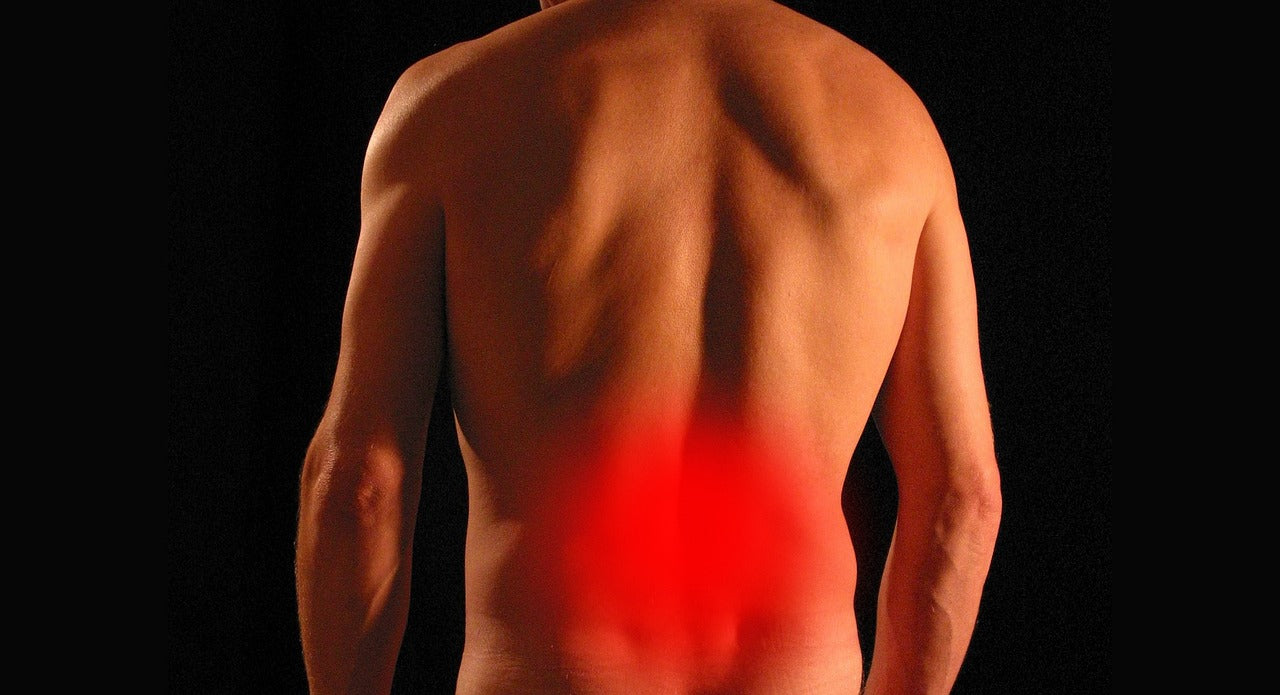
Why Back Pain Is Everywhere And How to Stop It
Back pain - it’s something millions upon millions of Americans are dealing with daily.
It is one of the leading causes of disability in America (as it relates to work), and it is also one of the leading causes of pain that leads to a less than stellar quality of life.
One of the more startling truths is that 80% of Americans will deal with debilitating back pain at some point in time.
The truth is, back pain isn’t just hurting Americans. In some cases, it’s leading to their early death.
I want you to realize that while back pain is pervasive, it doesn’t have to happen to you. The fact of the matter is that back pain is almost completely avoidable (I’ll get into some instances where it’s not going to be avoidable), and in many cases, if you end up with back pain, there are simple and provable methods for getting rid of it.
Where Does Back Pain Come From?
What leads to someone developing back pain can be a variety of circumstances. Some of the most severe and unavoidable factors are related to accidents. If you get into a bad car accident or have a bad fall, it’s pretty difficult to come through that unscathed.
Or, if you’re born with a physical deformity or are suffering from a degenerative disease, you may have to deal with it.
However, even with that being true, there are things you can do both to offset back pain or even ensure that a degenerative disease doesn’t take hold and rob you of health and vitality.
Many people develop back pain for a variety of reasons, but the following two are likely responsible for most back pain.
They are either sedentary (meaning they barely move and their joints and muscles weaken), or they are involved with some type of manual movement that is either repetitive and activates a core set of muscles while neglecting the rest or is simply incredibly hard on the body’s musculature.
A person’s poor posture can create imbalances in the skeletal system and muscles when it comes to a sedentary lifestyle.
And, as sedentarism often leads to obesity, this only makes these worse as there is an increase in stress on the spine, which often leads to further spinal injury and pain.
The other side of the coin is that in the modern world, we know the majority of back pain cases arise from mechanical problems and soft tissue injuries. Think of things like sprains and strains, which are the result of sudden movements or improper lifting techniques.
They can mess a person up and often lead to herniated discs, where the cushioning between vertebrae protrudes and irritates nearby nerves.
As I referenced, degenerative conditions such as osteoarthritis contribute to the wear and tear of the spine, leading to chronic pain, too.
The Problem With Most Common Back Pain Treatments
Because back pain is such an issue, there is a long list of treatments for it.
Sadly, many of them are ineffective, and some are downright harmful.
It’s been shown that the treatment of chronic back pain played a significant role in the escalation of the opioid crisis in America.
Initially, opioids were prescribed as an effective solution for managing severe pain, with the belief that they were less addictive in the context of medical use.
However, this led to widespread prescription and misuse, spiraling into addiction and overdoses, highlighting the critical need for safer, non-addictive pain management alternatives.
While you can go down the rabbit hole here and learn about the shady dealings of the pharmaceutical companies and “pain clinics,” the truth is medicines are hardly ever the right treatment for back pain.
I’d also have to say that there are tons of gimmick treatments related to back pain.
That’s true with most maladies, but because back pain is so prevalent and pernicious, there are tons of therapies that don’t do anything.
This is why it’s incredibly important to fix the root of back pain if you have it (or want to avoid it altogether).
This is why I want to focus on more holistic approaches to making back pain a thing of the past.
Expanding on Holistic Approaches to Back Pain
In many instances, people could resolve their back pain simply by making a few key changes in their lives.
I will say this: if your job is a big part of the reason you’re in pain, it’s hard to imagine quitting to prioritize your health.
But, as evidence shows, for many people, their job will put them on the path towards disability in the first place, so changing a job to save your back (and your health as well as income) isn’t a terrible idea.
What I recommend follows.
1 - Start With Lifestyle Modifications:
If you’re overweight, eat better and exercise.
If you don’t exercise, start.
The facts are simple changes in daily life can profoundly impact back health.
Regular physical activity strengthens the muscles that support the spine and helps maintain a healthy weight, significantly reducing the burden on the back. In fact, I don’t think there is a better way to strengthen the back and reverse back pain than to work out.
2 - Do Specific Back Targeted Physical Therapy:
If you’re already in pain, physical therapy involves personalized exercises that strengthen the back, improve posture, and enhance flexibility are going to help.
You don’t need to pay for a physical therapist. Still, they offer the additional benefit of incorporating manual therapy, ultrasound, and electrical stimulation to reduce pain and facilitate movement, which might be worth investigating.
3 - Make Ergonomic Adjustments:
Another thing you can do, as it relates to work, is make use of ergonomic adjustments.
Ergonomics means that your work environment or tools conform to your body's natural position.
Think of things like chairs that support the natural curve of the spine, adjusting the height of computer screens to eye level (and standing more often), and going so far as to put frequently used items within easy reach to avoid unnecessary stretching or bending.
4 - Try Alternative Therapies:
In addition to becoming stronger, you can try out alternative techniques like chiropractic, acupuncture, and massage.
Surprisingly, other “Eastern practices” like yoga, meditation, and even mindfulness are known to help with back pain. They can help relieve stress, which allows for the loosening of muscles and healing.
What is most important is understanding that pharmacological treatments are not the first thing a person should try to prevent or reverse back pain.
The strategies above will help your back feel better and improve your quality of life.
I’ve always believed that by focusing on prevention as well as addressing the root cause of personalized care and non-pharmacological treatments, there is a potential not only to alleviate the burden of back pain on individuals and healthcare systems but also to contribute to resolving the opioid crisis by reducing the dependence on prescription painkillers.
The integration of these holistic and multidisciplinary approaches into mainstream healthcare signifies a progressive step towards more sustainable, effective, and compassionate back pain management, reflecting a broader commitment to patient-centered care and well-being.



